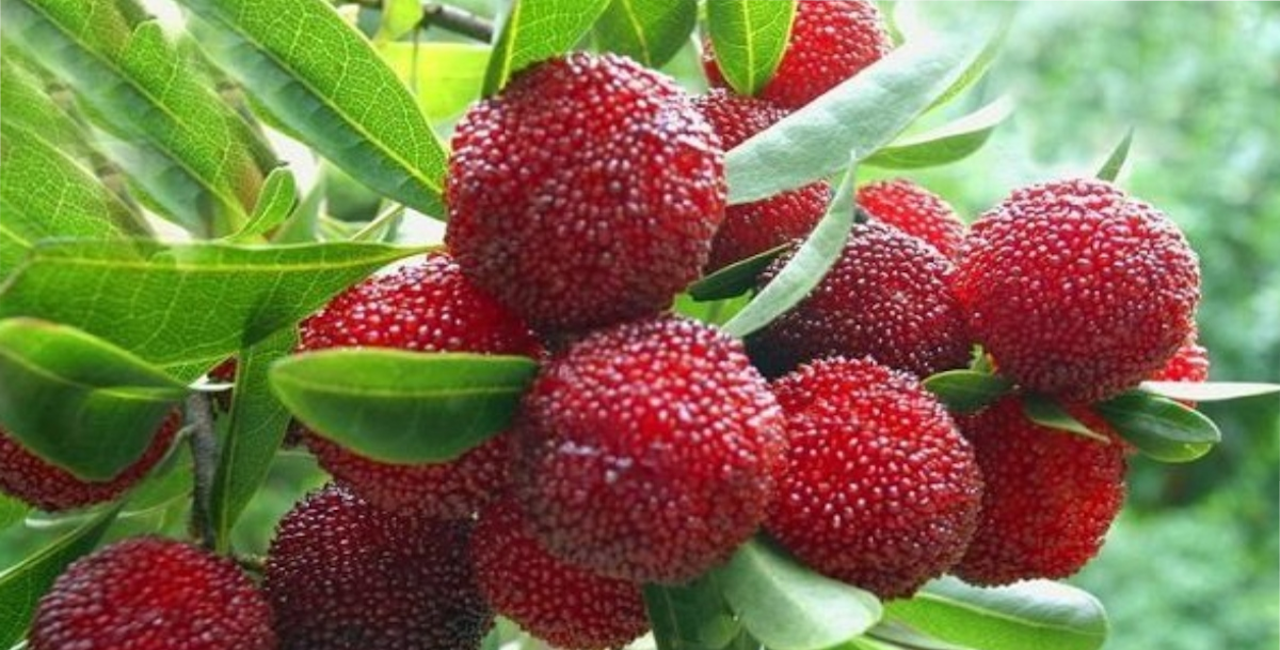Currently Empty: ₹0.00

Deep in the lush forests and serene landscapes of the Indian Himalayas grows a small, vibrant berry that holds a special place in the hearts of the people—Kafal. Scientifically known as Myrica esculenta, Kafal is a wild fruit that thrives in the temperate regions of Uttarakhand, Himachal Pradesh, and parts of Nepal. Revered for its unique taste, cultural significance, and health benefits, Kafal is not just a fruit; it’s a cherished symbol of Himalayan identity and heritage.
The Natural Habitat of Kafal
Kafal trees are typically found at elevations between 1,000 and 2,000 meters, flourishing in the cool climate and fertile soils of the Himalayan foothills. These evergreen trees can grow up to 12 meters tall and are known for their slender trunks and dense foliage. The fruit appears in clusters and ripens during late spring and early summer, marking the arrival of a season eagerly awaited by locals.
The berries are small, roughly the size of a pea, with a deep red to purplish hue when fully ripe. Their taste is a delightful mix of sweet and tangy, with a slight astringency that sets them apart from other berries.
Cultural Significance of Kafal
In the hills of Uttarakhand, Kafal is more than just a fruit—it’s woven into the cultural fabric of the region. The anticipation of the Kafal season is palpable, as villagers venture into the forests to harvest these prized berries. Kafal often serves as a nostalgic reminder of childhood for many who grew up in the region, evoking memories of carefree summers and family gatherings.
A popular local folk tale about Kafal narrates the story of a mother and daughter, emphasizing love, sacrifice, and miscommunication. This tale, often shared among generations, adds a layer of emotional resonance to the fruit, making it a symbol of familial bonds and regional pride.
Nutritional and Medicinal Benefits
Kafal is not just a treat for the taste buds; it’s also a powerhouse of nutrients. The berries are rich in antioxidants, vitamins, and minerals, particularly Vitamin C, which boosts immunity. They are also known for their anti-inflammatory and digestive properties.
In traditional Himalayan medicine, Kafal is used to treat various ailments, including indigestion, respiratory issues, and fevers. The bark and leaves of the Kafal tree are also utilized for their medicinal properties, often brewed into teas or concoctions to address skin conditions and infections.
Harvesting and Challenges
Harvesting Kafal is a labor-intensive process. The berries grow wild in forests, and collecting them involves navigating through rugged terrains and dense foliage. Once harvested, Kafal is typically sold fresh in local markets or consumed immediately, as its shelf life is short.
One of the major challenges in preserving Kafal is its perishability. The berries begin to spoil within a day or two after picking, making transportation and commercialization difficult. Efforts are being made to explore methods for extending its shelf life, such as drying or processing the berries into jams, syrups, or preserves.
The Culinary Appeal of Kafal
While Kafal is primarily enjoyed fresh, it is also used in traditional Himalayan recipes. Sprinkling a pinch of salt or chili powder enhances its flavor, turning it into a tangy snack. In some regions, the berries are fermented to make local wines or incorporated into desserts like puddings and compotes.
The leaves of the Kafal tree are sometimes used to smoke meat or fish, imparting a unique flavor to the dishes. These culinary practices highlight the versatility of this humble fruit and its deep-rooted connection to Himalayan gastronomy.
Conservation and Future Prospects
Despite its cultural and ecological importance, Kafal faces challenges due to deforestation, habitat loss, and climate change. Protecting the forests where Kafal thrives is essential to ensure its survival for future generations.
Awareness campaigns and sustainable harvesting practices are being encouraged to balance local economic benefits with ecological preservation. There is also potential for developing Kafal-based products that could bring this regional delicacy to a broader audience, benefiting local communities economically.
Conclusion
Kafal is more than just a fruit—it’s a living symbol of the Himalayas’ natural beauty, cultural richness, and biodiversity. Its unique taste, health benefits, and deep connection to the traditions of the hill people make it a treasure worth celebrating and protecting.
For those who have tasted Kafal, it is a reminder of the simplicity and purity of life in the hills. And for those yet to experience its charm, Kafal stands as an invitation to explore the unspoiled magic of the Himalayan region, where nature and culture blend seamlessly into a vibrant tapestry of life.


